Brake Pads Replacement Front
Removal Procedure
- Remove one-third of the brake fluid from the master cylinder reservoir.
- Raise and suitably support the vehicle. Refer to
Lifting and Jacking the Vehicle
in
General Information.
- Remove the tire and wheel assembly. Refer to
Tire and Wheel Removal and Installation
in Tires
and Wheels.
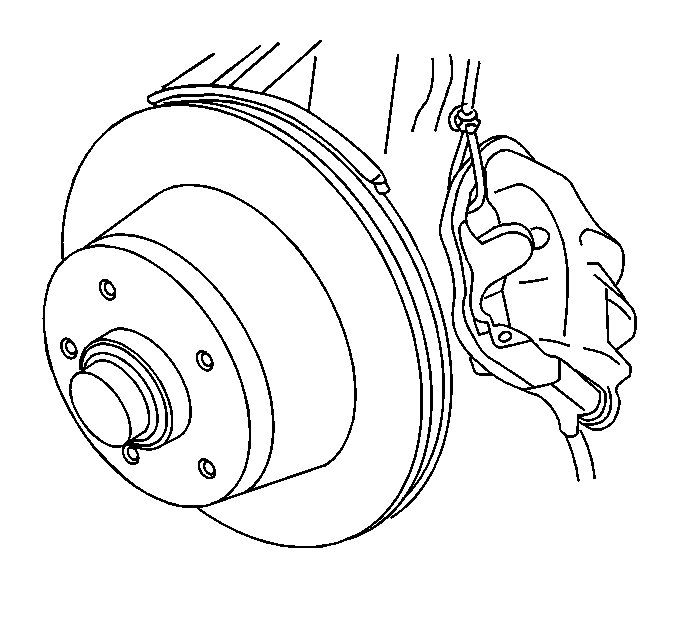
- Remove the caliper and
support with mechanic's wire. Refer to
Brake Caliper Replacement
.
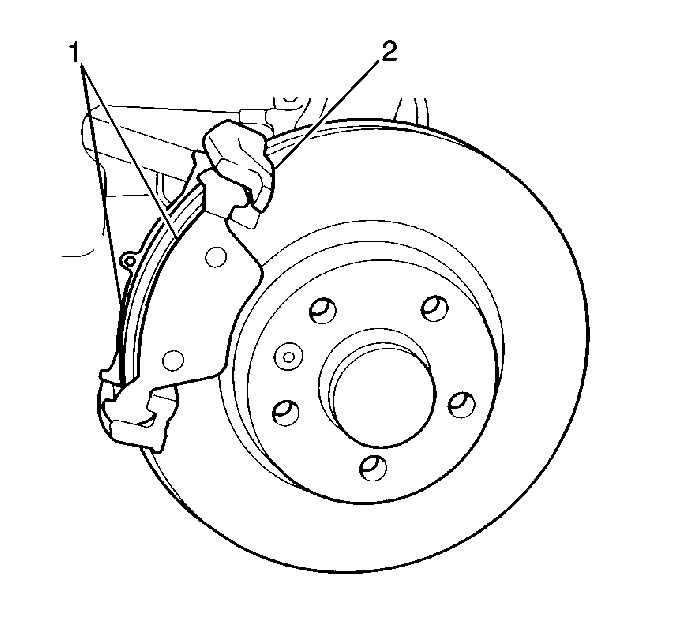
Important: Do not attempt to pry or pull the brake pad wear sensor out of the brake
pad. The brake pad wear sensor must be pushed out of the brake pad.
- Remove the inner brake pad from the caliper bracket with the brake
pad wear sensor.
- Remove the brake pads (1) from the caliper bracket (2).
- Remove the brake pad wear sensor. Use a small punch to push the
sensor throught the back side of the brake pad.
- Insect the following components:
| 8.1. | Inspect the guide pins for free movement within the caliper bracket.
Replace guide pins and or guide pin boots in the following conditions: |
| 8.2. | Inspect the condition of the brake pad wear sensor, replace as
needed. |
| 8.3. | Inspect the brake pads for un-even wear. |
Installation Procedure

- Ensure caliper bracket
mounting surfaces (1) are clean and lubricated.

- Install the inner and
outer pads (1) to the caliper bracket (2).
- Connect the brake pad wear sensor to the inner brake pads.
- Connect the brake pad wear sensor harness and retainers to the
front suspension strut.
- Install the caliper. Refer to
Brake Caliper Replacement
.
- Install the tire and wheel assembly. Refer to
Tire and Wheel Removal and Installation
in Tires
and Wheels.
- Lower the vehicle.
- Fill the master cylinder reservoir.
Important: It is important that new braking surfaces be broken in or burnished
after brake pads are installed and/or after rotors are refinished. Avoid overheating
the brakes.
- Make 20 stops from 48 km/h (30 mph) using medium to firm
brake pedal pressure to burnish the brake rotors.
Brake Pads Replacement Rear
Removal Procedure
Notice: Do not use lubricated compressed air on brake parts as damage to rubber
components may result.
- Remove one-third of the brake fluid from the master cylinder reservoir.
- Raise and suitably support the vehicle. Refer to
Lifting and Jacking the Vehicle
in General Information.
- Remove the tire and wheel assembly. Refer to
Tire and Wheel Removal and Installation
in Tires
and Wheels.
Important: Use only minimal effort to manipulate the pistons. Ensure to use slow
gradual force as the cylinders are so small.
- Use a screwdriver to gently pry between the rotor and each brake pad
to bottom each piston in its bore.
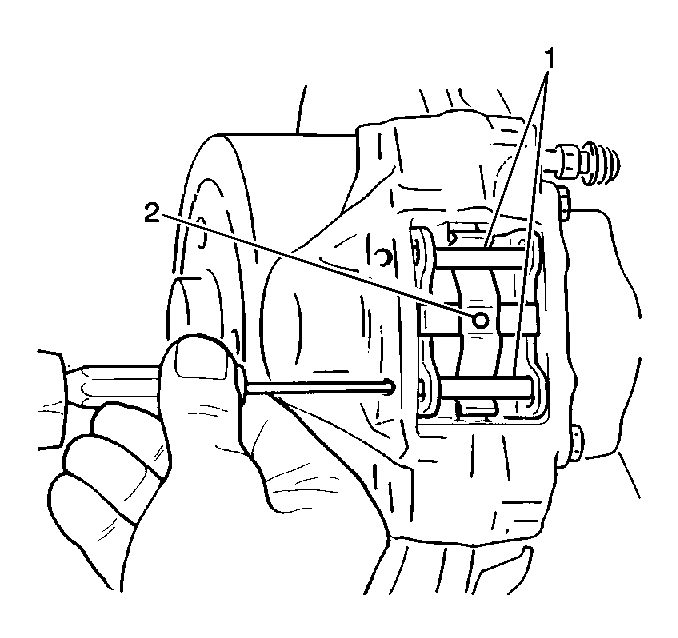
- Use a punch to drive the
rear brake caliper retaining pins (1) out of the rear brake caliper from the
outside inward.
- Remove the rear brake caliper spring retainer (2).
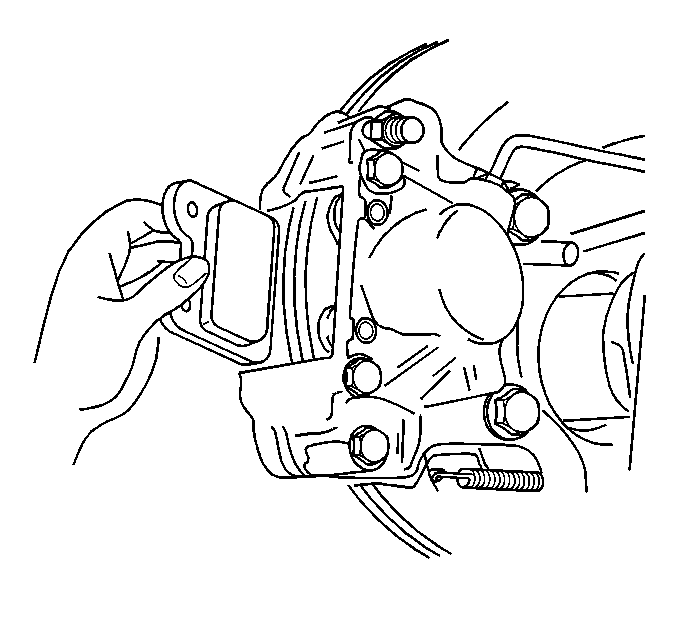
- Remove the brake pads.
- Inspect the pins for corrosion and/or damage. Replace the pins
as necessary.
- Inspect the brake pads for wear.
- Inspect the brake pads for maximum taper of 0.15 mm (0.006 in).
Replace with a new brake pad set if any pad tapers beyond the specification.
Installation Procedure
Important:
| • | Use clean brake fluid to lubricate all the rubber parts to ease
assembly. |
| • | Replace brake pads in axle sets only. |
| • | The torque values specified are for dry, unlubricated fasteners. |
| • | Perform the service operations on a clean bench, free from all
mineral oil materials. |
- Install the brake pads.
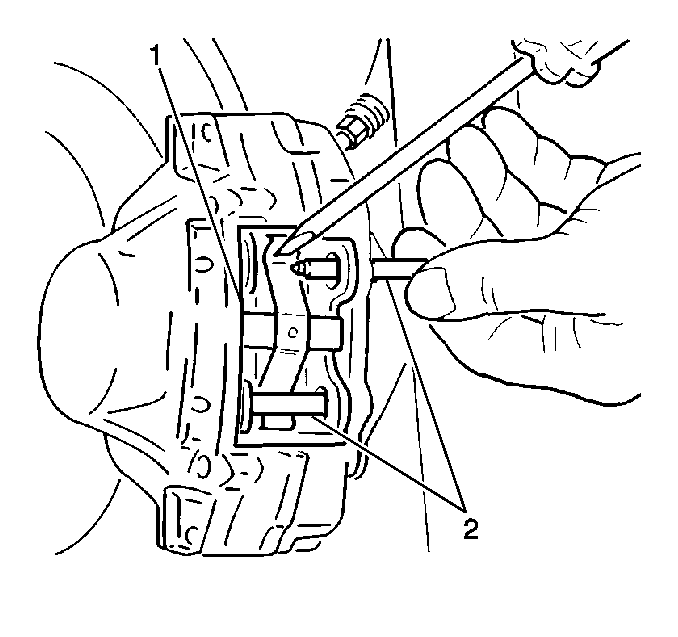
- Perform the following
steps to install the rear brake caliper retaining pins:
| 2.1. | Use a punch to drive the first pin (2) into the caliper. Ensure
the pin (2) inserts through the holes in the brake pads. |
| 2.2. | Install the rear brake caliper spring retainer (1). |
| 2.3. | Install the second pin (2). Ensure the pin (2) inserts through
the holes in the brake pads. |
- Install the tire and wheel assembly. Refer to
Tire and Wheel Removal and Installation
in Tires
and Wheels.
- Lower the vehicle.
- Fill the master cylinder reservoir.
Important: It is important that new braking surfaces be broken in or burnished
after brake pads are installed and/or after rotors are refinished. Avoid overheating
the brakes.
- Make 20 stops from 48 km/h (30 mph) using medium to firm
brake pedal pressure to burnish the brake rotors.







